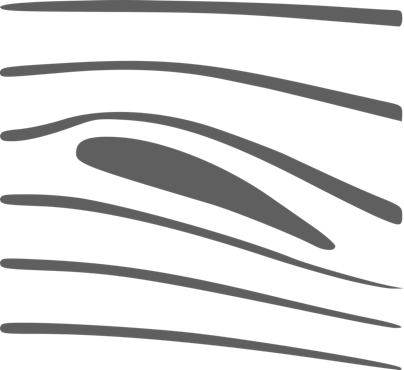Wind Tunnel CFD features
Numerical technology includes:
• Immersed Boundary Method using discrete forcing approach
• Werner-Wengle wall function
• Vorticity confinement method switch (on/off) to add artificial turbulence
• 1st or 2nd order Advection scheme
• CPU and GPU acceleration
Key Features include:
• Specify your geometry: either use the interactive mode to draw obstacles, or the import mode to import shapes from text files. These files include numerical settings and can also include reference data for comparison (see format description below).
• Pre-processing tools: adjust mesh size, wind tunnel input velocity magnitude and angle, fluid viscosity, periodicity top/down & Reynolds number. Tap twice on the inlet region to open the boundary condition window.
• Adjust numerical parameters : CFL number, iteration number for the Poisson equation solver, artificial turbulence.
• Visualization: physical fields (pressure, velocity magnitude, velocity components, vorticity), particles (streamlines, streak lines and random), colored smoke (predefined stripes, streamlines or streak lines).
You can change the number of smoke streamlines by pitching the screen on the inlet region.
• Analyse the flow field using the color scale. Tap once inside the scale to change the color scale (only for pressure and vorticity). Double tap near the scale to hide/shox the scale.
• Post-processing tools: line or point probes are available to plot the field in a graphic. You can plot the averaged or the instantaneous fields as well as the lift and drag. Strouhal number is available using an automatic Fourier decomposition tool. An output file (in VTK format) of your results is available.
• Tap twice inside the plot window, the color scale or the information box (top right) to remove them.
• Predefined cases are available such as circle cylinder Re=3900, square cylinder Re=500, Durham turbine and others.
